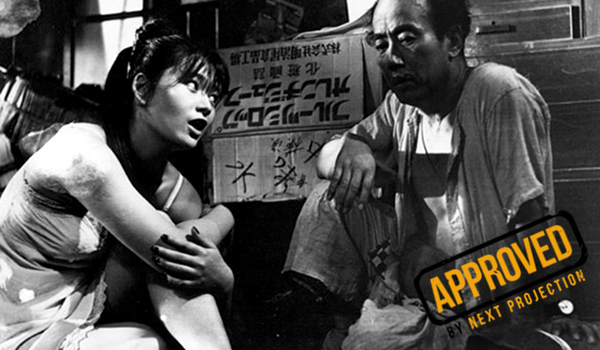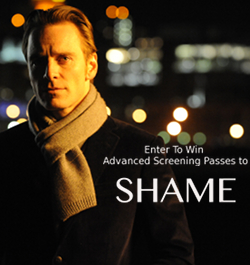Review: The Sun’s Burial (1960)
Nagisa Oshima’s The Sun’s Burial is a lamentation for the death of Japanese society and the subsequent death of morality. The film follows the lives of the poor and down trodden citizens of post-war Japan driven by little more than ignorance, paranoia, hopelessness, and an overwhelming sense of desperation. These people can only survive by selling the only possessions they have left. They sell their lives, their bodies, their blood, and their own births. There is no solace or shelter from the hopelessness of their situation, save for the fleeting moments of soul numbing found at the bottom of a bottle.
Oshima often uses different visual allusions to the Japanese flag in his work, but The Sun’s Burial finds this technique at its most mournful and poetic. The denizens of broken Japanese streets huddle in makeshift shanty towns as the setting sun casts an eternal haze setting spectral shadows against the walls and streets of a broken country. The sun will soon set completely and hopelessness will give way to viciousness and the complete erosion of the basic framework of empathetic human behavior. It not only serves as a touching visual metaphor for Oshima’s feelings at the time, but it grants everything an otherworldly quality as the poverty stricken live in a false world of perpetual “magic-hour” lighting and compromised morality.
The sun must set before it will rise once again, just as it will rise after it has set. It is difficult to gauge if this film comes from a place of hopefulness or nihilistic desperation. The sun casts its half light on the once great land that housed an isolated empire, but its power is waning. Eventually its light will diminish completely and build in to a dark crescendo of rage, but the sun will rise again and the concepts of morality and basic humanity will flourish in the daylight. If the sunset is just a precursor that signals the inevitability of dusk, the darkness will eventually be followed by dawn. One just hopes that there are pieces left that are worth picking up when the sun rises again.















 Review: Outrage (2010)
Review: Outrage (2010) Subversive Saturdays: Unglassed Windows Cast a Terrible Reflection
Subversive Saturdays: Unglassed Windows Cast a Terrible Reflection Review: Hugo (2011)
Review: Hugo (2011) Review: The Muppets (2011)
Review: The Muppets (2011) Review: The Muppets (2011)
Review: The Muppets (2011)





